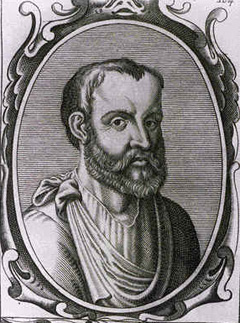Galen's writings on anatomy were the mainstay of the medieval physician's university curriculum, but they had suffered greatly from stasis and intellectual stagnation. In the 1530s, however, Belgian anatomist and physician Andreas Vesalius took on a project to translate many of Galen's Greek texts into Latin. Vesalius's most famous work, De humani corporis fabrica, was greatly influenced by Galenic writing and form. Seeking to revive Galen's methods and outlook, Vesalius turned to human cadaver dissection as an evolution of Galen's natural philosophy. Galen's writings enjoyed a revival at the hands of Vesalius, who promoted Galen and expounded on him through books and hands-on demonstrations. Since most of Galen's writings were also translated into Arabic, the Middle East knows and reveres him as "Jalinos". Galen, identified venous (dark red) and arterial (brighter and thinner) blood, each with distinct and separate functions. Venous blood was thought to originate in the liver and arterial blood in the heart; the blood flowed from those organs to all parts of the body where it was consumed.
 Notes
NotesGalenic formulation
Timeline of medicine and medical technology
